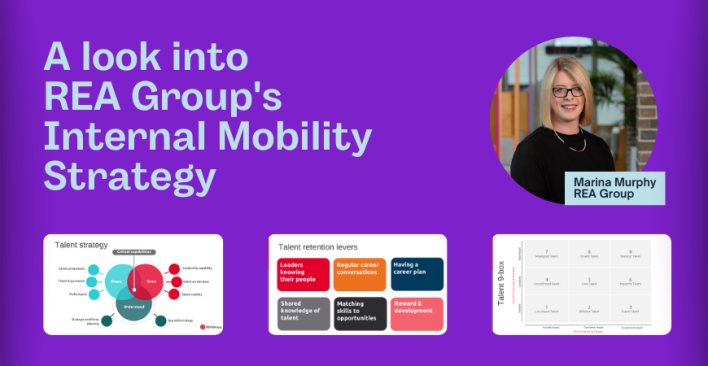Why your organisation needs T-shaped people

In marketing, you work with a wide range of specialists to create a collective output that’s valuable to the client. Content producers, media strategists, organisational consultants — these are just a few of many. In theory, a group of specialists has all the knowledge and skills it needs to tackle big challenges.
In practice, though, it often turns out a gathering of even great specialists isn’t enough. What you also need are T-shaped people. Ts have deep expertise in one area, but they can also speak intelligently to many others. On top of being a specialist, they are also somewhat of a generalist. Like the letter T, they stretch long on one end and also a little to the sides.
These people are also called “generalising specialists.” As defined by Scott W. Ambler in an essay on AgileModeling.com: “Generalising specialists are often referred to as craftspeople, ‘T-skilled’ people, multi-disciplinary developers, cross-functional developers, deep generalists, polymaths, versatilists, or even ‘renaissance developers.’”
Whichever moniker you choose to describe these professionals, T-shaped people have a specialty skill, a general knowledge of other pertinent service areas, and a hunger to learn and grow.
T-shaped people act as the glue that brings a team of specialists together to achieve great, collective victories.
So what do T-shaped people bring to an organisation? Below are a few benefits of their unique makeup and sample questions to help you identify them in interviews.
They see the bigger picture
T-shaped people pull insights and inputs from all members of the team to piece together a view of the future. They are not just beholden to one competency, and so they are able to look beyond one input and consider other influential factors. Their perspective is much wider than someone who is responsible for deep expertise in only one service area.
For example, specialists who focus on developing a digital product, like a website, may not understand the intricacies of an effective integrated media campaign driving to that digital product. Connecting those two elements of the broader customer experience means that both can be optimised towards a common goal: driving qualified prospects from awareness to conversion in a seamless manner. T-shaped people can see how service and product offerings fit together to create greater customer value. They can bring the right people together to share information and define a vision.
One way to spot whether someone might be a T-person is an overt sense of curiosity. In order to continually expand one’s expertise beyond their core competencies, a person must have an insatiable appetite for more information and perspectives.
T-people might ask these questions at the end of the interview:
- How does this position, or group, interact with other areas of the business?
- What are our contributions to the business’s long-term goals?
- How do people share information and perspectives here?
- Do you have learning initiatives and/or do you support employee education?
They build bridges
T-shaped people have the ability to navigate sticky politics that arise in a matrixed organisation in order to effectively represent an idea or initiative. As a leader within the team, they pull in various specialists to expand technical explanation where needed and add credence to the larger idea. Often, they act as a mediator between specialists with strong opinions.
Ts guide individuals to make appropriate concessions for the greater good of the work. Plus, with their deep understanding of their specialty’s contribution to the collective plan, they can provide additional clout as specific questions or push-back arises.
Once a team is aligned on a plan, the T-shaped person can then help bring the rest of the organisation along by selling the idea upward. As someone who works with experts across multiple fields, they can weave a story to help garner leadership buy-in and funding. They act as the narrator, pulling in all the relevant plot points from the team’s experts to provide a high-level story.
Additionally, having experienced the back and forth of the team’s opinions, Ts are then armed with useful data and justification when speaking to higher-level leadership. And since they have exposure to multiple areas, including those outside of their main skill set and/or passion, they can better sway public opinion toward an idea.
Here are a few interview questions to reveal who has this ability:
- Tell me about a time where you had to sell a collective team idea to senior management.
- What is your process for managing office politics?
- How do you pull disparate ideas into a cohesive solution?
- How do you prefer to build rapport with others?
They tailor their communication approach
As someone who deals with many different personalities and focus areas, a T-shaped person can coach members of the team on how to work better together and improve communication styles.
“By learning each others’ skills, we also learn each others’ domain-specific language. This helps us communicate more effectively as we have more understanding of different perspectives.” — Jason Yip
T-shaped people tailor their communications when speaking to different members of the team. Because of that, they understand what works best when connecting with a creative, a brand strategist, or any other focus area. Should an issue arise between two specialists, T-shaped team members can pull each person aside and help them each understand and empathise with the other’s point of view.
The role Ts play on a daily basis forces them to be master communicators. Their behaviour acts as a positive example for the team, improving others’ communication skills in the long-term.
Use these interview questions to assess communication style:
- How do you manage different personalities? How do you adapt your style?
Ex: A team member with a blunt, direct approach?
Ex: A colleague who is easily shaken and reactive? - How do you mediate conflict among team members? Follow-up: How does conflict benefit the end product?
- Tell me about a time you had to relay bad news to a client or colleague.
- How might you simplify a complex issue in order to explain it to a colleague?
- How might you persuade someone to see things your way?
Summing up
Specialisation is extremely important, but it also sometimes creates problematic silos. On the flip side, acting as a generalist, “a jack of all trades,” without deep knowledge in a service area won’t be sufficient in competitive and quickly evolving industries.
In a Harvard Business Review article, the authors note that generalists aren’t as productive or effective as specialists in fast-paced environments: “Generalists appear to be relatively successful as long as the pace of change is not too rapid, but their productivity decreases when the pace of change increases.”
A team needs to strike a balance of skill sets to maximise creativity and effectiveness. Of course, there isn’t a one-size-fits-all approach to team organisational approach. But, it is important to acknowledge the vision, strategy, and soft skills that a T-shaped person brings to a company. Encouraging a culture of continuous learning and open communication supports the development of T-shaped people.
Organisations should acknowledge each individual’s expertise, but also push them to try new things and regularly interact with other groups. It is in everyone’s best interest to weave growth and sharing into the company culture. This will ultimately generate more T-shaped professionals.
Cover image: Shutterstock
This article first appeared on Medium on 24 July 2019.
Related articles
Leave a Reply
Sign up to our newsletter
Get a weekly digest on the latest in Talent Acquisition.
Deliver this goodness to my inbox!


